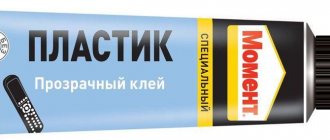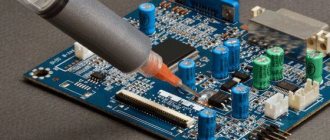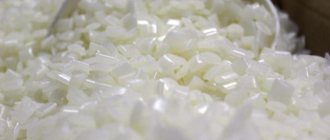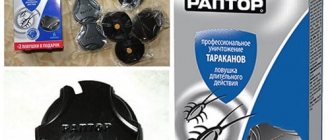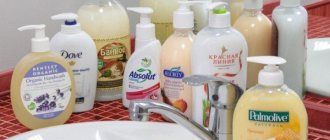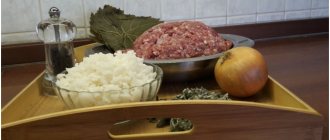How do glue traps work and how effective are they?
The glue trap is a mini-book, which, when opened, will reveal an adhesive composition applied to the “pages of the book.”
The mouse gets stuck in this viscous substance, unable to get out. These devices are absolutely non-toxic and safe for humans and pets.
Let's celebrate! These devices are effective only on mice and young rats, and an adult rat will be able to get out of the “sticky trap.”
Composition and principle of action
The principle of operation of a glue trap for mice and rats is that the glue against rodents needs to be distributed over a small surface of the floor or objects located in places where they accumulate. The animal, running through the sticky trap, will get stuck in the mixture and will not be able to escape from it.
Rat catching glue contains substances such as polybutylene, polyisobutylene and cyclosan. Together they form a viscous mixture that remains sticky for a long time. Thus, not one, but several individuals of mice or rats can fall into a mouse trap at once.
The effectiveness of the glue trap will increase if there is a mouse bait in the middle of the glue coating. This could be a piece of cheese or sausage, bread crumbs, cereal or seeds. Many manufacturers add special aromatic substances to rat glue that attract rodents with their scent. Therefore, it is not necessary to use additional mouse baits.
Advantages and disadvantages of glue
Glue for catching rodents has both pros and cons to use. Let's consider its advantages:
- does not require complex manipulations;
- non-toxic;
- rodents of any size are caught in glue “traps”;
- retains its stickiness for a long time;
- there is no smell, which makes it possible to use it in places where people live;
- low cost of the product.
Flaws:
- in places with a lot of dust, the drug becomes contaminated and loses its adhesiveness;
- if used carelessly, it can get on the skin, floor and clothing;
- When caught in a trap, mice and rats emit a loud squeak, which forces them to get rid of the still living rodents.
Disadvantages of Using Sticky Traps
Like any product, mouse glue is not without its drawbacks in use. Here are the most common:
- Inhumanity. Perhaps this is one of the main negative qualities of this remedy: a slow and cruel death awaits a rodent in a trap. If he is found still alive, then the pest hunter himself will have to suffer, since he will have to think about how to get rid of him. Not everyone is capable of finishing off a helpless little mouse, but throwing it still alive into the garbage chute is no less heartless.
- Allergic activity (hyperallergenicity). There have been cases when substances contained in the glue caused irritation and allergies in people sensitive to them. The sticky trap does not have poison that kills the rat; the rodent dies from exhaustion, which is extremely inhumane
- Extremely difficult to remove glue. Getting glue from sticky traps on children's skin and pet hair is very common. At the same time, it is almost impossible to remove the substance from hair or fur. The only effective way to get rid of matted hairs or hairs is to completely cut off the affected areas. To remove the sticky substance from the skin, you have to use strong chemicals, such as solvent.
- The cry of the victims. Rodents, having fallen into a trap, emit a loud cry for a long time, sometimes a squeal, which is very difficult to hear and sometimes even scary.
The problem of ethics in this case is especially acute. Of course, it is necessary to fight rodents, but if you wish, you can always find a more humane alternative.
Fragrances to Attract Rodents
You need to know what smell attracts mice, since aromas not only attract animals, but also repel them. To avoid the opposite effect.
Favorite food of mice
Mice have a keen sense of smell and are real gourmets. Not all strong aromas of food from a person’s table are of interest. Animals prefer natural food, and the presence of chemical additives can scare them away. You should not use cheap sausage, rotten fish, or spoiled meat as bait.
On a note!
Mice are smaller predators than their larger cousins, rats. Small animals are more often found in fields, storerooms, and grain barns. Whereas rats live in garbage dumps, trash cans, and sewers. And they eat whatever they have. Rats can be attracted to old lard; mice will avoid it.
Rules for using the adhesive composition
Using the substance is not difficult; you can carry out the process yourself. To do this, you must follow the instructions:
- Take a piece of smooth and flat material - cardboard or plastic - no smaller than 10x10 cm for mice and 25x20 for rats. For the latter, it is additionally advisable to attach the selected material to the floor using self-tapping screws, otherwise the animal may drag the entire trap with it and stain the room with an adhesive substance. A cardboard sheet is perfect for applying the adhesive composition.
- When fighting mice, you should lubricate the substrate with glue in strips 1-2 cm wide, maintaining a distance between them of up to 4-5 cm.
- To catch rats, stripes are drawn wider and at a greater distance. The substance acquires irreversible stickiness half an hour after application.
- It is recommended to place bait in the middle of the trap, for example bread soaked in vegetable oil.
Rat traps should be placed in places where victims are more likely to appear - in corners, next to walls and partitions, directly next to burrows, at a distance of 3 to 15 m from each other, based on the volume of the room, its clutter with furniture and the number of pests .
For maximum effectiveness of a glue trap for rats, you need to place it in places where rodents are often found.
At the same time, it is necessary to ensure isolation from children and animals and minimize contamination of the sticky surface; therefore, it is safer to place traps under furniture, inclined towards walls or in special bait houses.
Glue traps must be inspected frequently to see if new animals have been caught and, if this happens, replaced with fresh ones.
If the trap is used for rats, then it is enough to examine it once a day. This is explained by the fact that the caught animal will emit danger signals (squeaking), which is why its fellow tribesmen will avoid this place. But when mice are caught using glue, this factor turns out to be insignificant - these rodents easily run into the trap in a group in a short period of time. Mice are much less cautious animals than their larger relatives; therefore, several victims often fall into one trap at a time.
What to do with caught victims
When adhesive users first turn to this method of catching pests, they often have the question of what to do with the caught rodents. The choice of the most appropriate option from an ethical point of view remains up to the hunter himself . There is only one piece of advice that will allow you to deal extremely humanely with a captured animal. To alleviate his suffering, you can generously wet a piece of cloth with gasoline or acetone and place it on top of the caught victim. She will first lose consciousness, and after that, being in an unconscious state, she will suffocate.
To make it easier for a rodent to die in a glue trap, cover it with a piece of cloth soaked in gasoline or acetone.
Few are ready for such actions. Traps are most often simply thrown into the garbage chute with mice still alive, leaving them in a painful and hopeless situation.
There is an opinion that the substance in the trap gradually dries out, but this is not the case. Due to its special composition, it retains its effectiveness until its layer becomes dirty with dust, sand from the street, flour or dirt. For this reason, it is advisable to change the substrate with the substance approximately every 6-7 days.
Types of glue traps against mice and rats
There are a lot of adhesive sticky “traps” on sale and the difference between them is mainly in shape or size. Conducted sociological surveys made it possible to identify the most popular adhesive traps from the total number of adhesive traps on the market.
CatchExpert
- The adhesive plates produced by an Argentine company are shaped like a book and measure 17 by 25 centimeters.
- The adhesive viscous composition applied to the cardboard base has the property of not drying out for a long time, thanks to special additives.
- The glue applied to the surface always has a protective layer and it will need to be removed before placing sticky devices.
Rodentoff
Under the Gryzunoff brand you can find various variations of adhesive devices. They can be in the form of sheets, plastic trays or prefabricated cardboard houses.
There are universal Velcro strips on sale that can catch both mice and rats. But there are also targeted trapping devices - specifically from rats and specifically from mice.
Any version of the Gryzunoff sticky trap has the same technical characteristics.
The adhesive base is created using:
- mineral oil;
- rubber;
- rosin;
- special fragrances - attractants.
Thanks to the fragrances, there is no need to place additional bait on the sticky surface.
Note! Thanks to the components of the adhesive composition, it has the ability not to harden for more than a hundred days, which increases the efficiency of using these devices.
Trap
- The Kapkan glue trap is a universal means for catching rodents.
- The possibility of using these “traps” is quite wide, including places where the use of chemical rodenticides is absolutely not possible.
- The adhesive layer of the trap is made of rubber and plant resin, which attract rodents with their aroma.
- These strips have a fairly thin layer of cardboard under an adhesive backing. This is done so that the installed “trap” does not stand out too much from the surface on which it will be located.
Glue "Clean House"
Glue Clean house from rodents and insects is a popular substance that can be used in different rooms.
The composition is a mixture of three components:
- Polybutylene – 76.6%.
- Cyclocaniol – 10.9%.
- Polyisobutylene – 12.4%.
It has several main advantages:
- Does not freeze for a long time.
- High viscosity, adhesion.
- Does not deteriorate with prolonged exposure to moisture.
- Safe glue for pets and people.
- Low cost.
Efficiency is increased by adding bread, cheese, and cereal to the sticky layer.
Forsyth
An effective trap that differs from other names. Its peculiarity is that it has a specific smell that attracts rodents. During operation, the room temperature cannot be increased above +30 degrees. Used to combat small animals and insects. It does not emit harmful substances, which is why it is used in hospitals, educational institutions, and food storage warehouses.
MR mouse
There is also a name for a special glue that is packaged in tubes. The finished trap is a plate measuring 20x15 cm. It can be effectively used against mice, rats, and insects. It does not contain harmful substances, so the device is considered safe for the human body and pets.
Block
Devices used to catch mice, rats, insects. The record must be removed from the packaging, the protective film removed, and placed in a pre-designated place. The temperature range that the sticky surface can withstand is from +5 to +50 degrees. Using bait you can increase the effectiveness of the trap.
Kotofey
If all previous adhesive devices are disposable, then the Kotofey sticky traps are reusable.
To do this, the kit includes ten adhesive layers, a plywood plate and special clamps for fastening.
The sticky layer is placed on a plywood board using clamps and after a rodent gets on it, it is simply unhooked and disposed of.
The adhesive base is based on:
- polybutylene;
- polyisobutylene.
Good to know! The adhesive composition does not contain any chemical components, which indicates the safety of using this device in human and domestic animal habitats.
Mr. MOUSE
These traps are made in several types:
- in the shape of a house;
- in the form of plates.
Any chosen form is convenient to use - just remove the protective layer and place the trap in places where “gray robbers” are likely to appear.
The adhesive composition does not contain chemical compounds, which allows the plates to be placed in food storage areas.
Glue trap for mice
In addition to adhesives for catching rats, ready-made plates with an applied adhesive composition are sold. They cost more, but a person does not need to look for a material on which to apply the substance, or get his hands dirty while working with the purchased substance.
Rodentoff
They are plates that are designed for catching small animals. The plate will retain its properties at temperatures from +5 to +30 degrees. Because of this, you cannot use a ready-made trap in the cold.
Advantages:
- The plates are effective against rats, mice, and large insects.
- Long hardening time for the sticky surface.
- A thin sheet that does not stand out on floor coverings.
- Does not emit harmful substances during use.
Additionally, you need to use bait to enhance the effectiveness of the plate.
MR mouse
There is also a name for a special glue that is packaged in tubes. The finished trap is a plate measuring 20x15 cm. It can be effectively used against mice, rats, and insects. It does not contain harmful substances, so the device is considered safe for the human body and pets.
Forsyth
An effective trap that differs from other names. Its peculiarity is that it has a specific smell that attracts rodents. During operation, the room temperature cannot be increased above +30 degrees. Used to combat small animals and insects. It does not emit harmful substances, which is why it is used in hospitals, educational institutions, and food storage warehouses.
Block
Devices used to catch mice, rats, insects. The record must be removed from the packaging, the protective film removed, and placed in a pre-designated place. The temperature range that the sticky surface can withstand is from +5 to +50 degrees. Using bait you can increase the effectiveness of the trap.
Safety precautions
Despite the fact that mouse glue does not emit toxins or poisons, you should adhere to some safety measures:
- Wear disposable rubber gloves before applying the product.
- Apply glue to the base using a brush or sponge. You can't do this with your hands!
- Remember that glue traps should be kept out of the reach of children and pets. If possible, completely limit entry into the room until the pest is caught.
- After all manipulations, you must wash your hands with soap and running water.
- If glue does get on your skin, you can wash it off with acetone or special gasoline. After finishing work, be sure to wash your hands thoroughly with soap. If the product gets on your hair or fur, it is extremely difficult to wash it off and most often you have to remove the contaminated area with scissors.
Safety precautions when handling glue
Despite the fact that mouse glue is non-toxic, you must work with it carefully, following safety precautions:
- you must wear rubber gloves;
- long hair should be collected in a ponytail or bun;
- Do not touch your hair or face during the process;
- glue is applied to the base with a brush or sponge; do not smear it with your fingers, even with gloves;
- when preparing traps, there should be no small children or pets in the room;
- if glue gets on the skin, it must be removed immediately with acetone, gasoline, vegetable oil, or nail polish remover;
- Upon completion of making and installing traps, you should thoroughly wash your hands.
Attention! Mice that have been caught on glue should absolutely not be offered to a cat or dog.
DIY mouse glue
There is also a recipe for making mouse glue with your own hands. To do this you will need rosin, petroleum jelly, pine resin, and bitumen pitch. But since making glue for mice with your own hands is not so easy, it is easier to purchase a ready-made product in a store. Moreover, the average price of products is in the range of 150-300 rubles. Traps will cost a little more, with the price scale directly proportional to the complexity of the design.
Glue for rodents is effective and safe . But sometimes, even despite the powerful composition of the product, it is not possible to catch the mouse. It is worth trying a different drug or choosing a more humane method of bullying. For granaries it is easier to purchase special poison or mousetraps.
In a house where there are children, it is better to have a cat. If you don’t want to kill rodents, but just need to scare them away, then use ultrasonic devices that emit sounds that can only be heard by animals.
How to replace mouse glue
In some situations, the use of glue is impossible or ineffective. In this case, there are several alternative options:
- You can use a traditional mousetrap. The rodent will be killed without your assistance. All you have to do is throw it away.
- Mummifying poison. Quite a convenient way to fight rats. But then the dead rat or mouse will lie under the furniture, where you will not be able to see or reach it.
- Loose poison. This type of poison is suitable only in rooms where there are no other inhabitants. The bright color of the drug can attract a child or pet. In addition, a cat or dog can eat a poisoned rodent.
- Ratcatcher cat. A rather unusual method of controlling rodents, but very effective.
- Ultrasonic repeller. The most modern method. It is based on the fact that a device inserted into a socket emits a sound that cannot be heard by humans, but cannot be tolerated by mice and rats. They just run away.
Glue for mice and rats
It is difficult to name the best glue for mice, since according to users, almost all products on the market have approximately the same effectiveness. The range of sticky traps is also quite wide. The difference between them is mainly in size and shape.
ALT glue
Russian-made ALT glue helps get rid of not only rats and mice, but also ants and cockroaches. The product can be used indoors with any level of humidity, as well as outdoors. In addition to catching rodents, ALT glue is used to protect tree trunks from pests.
ALT glue
Catch expert
The glue trap for catching rodents, made in Argentina, is made in the shape of a book and has a rather impressive size of 21x31 cm. Thanks to special additives, the glue applied to the base does not dry, which allows you to use the trap against mice for a long time.
Kotofey
Another Russian product designed for catching rodents. Kotofey glue has optimal thickness, does not spread, but is quite easily applied to the surface. It does not smell, does not dry out for a long time, and does not lose its properties in high humidity. According to the instructions, the adhesive properties are slightly reduced at sub-zero temperatures.
Rodentoff
Gryzunoff glue contains synthetic rubber, mineral and vegetable oils. The product has virtually no odor and is packaged in hermetically sealed 135 g tubes. A glue trap with this glue can protect the house from mice for 2 months. Ready-made glue traps are also produced under this brand.
Glue Clean House
Clean House glue is a popular remedy for mice, rats and insects. The product has high viscosity, does not dry out for a long time, is odorless, and does not contain toxic substances. The glue retains its properties even with prolonged exposure to moisture.
Forsyth
Forsyth glue is an effective repellent against rodents and insects and has a strong fixing effect. Properties last for 1.5–2 months. The same manufacturer produces ready-made glue traps in the form of plates and containers for getting rid of mice and rats.
Trap
Kapkan glue is designed to combat rodents, household insects and garden pests. Contains synthetic rubber, pine rosin, oils. The product is environmentally friendly and odorless. When making mouse traps using this glue, one must take into account that the mass is quite thick and very viscous.
Glue trap
Alternative to glue and cool traps
There are a number of alternative options that can replace anti-mouse glue. They have their own characteristics, which leads to changes in operating rules.
These include:
- Classic mousetraps. The death of a rodent occurs almost instantly. It is important to choose the right bait, choose a place to install the device and not leave your own odors. Rodents can successfully bypass them due to non-compliance with clear installation rules.
- Poison. It can only be used in rooms where there are no people or pets. Prohibited for use in hospitals and food storage warehouses. Poisoned mice and rats come out of hiding. But some of them die in hard-to-reach places, decomposing in the process. On sale you can find a poison that mummifies the carcasses of animals, thereby eliminating the persistent, unpleasant odor.
- Ultrasonic repeller. It is a compact device that connects to a common network. Creates ultrasonic waves that are inaudible to humans. Rodents are frightened by this sound. They begin to avoid the room where the device is operating. However, over time, mice can become accustomed to ultrasound. As a rule, rats are repelled by signals with a frequency of 20-50 kHz, mice by 10-20 kHz.
Many owners of private houses or apartments get a cat. This pet will not only create a more comfortable environment and delight others, but will also prevent mice from appearing. But in this case, the feline family is likely to catch some kind of infection or even get poisoned through a poisoned rodent carcass, which happens to almost all animals.
Alternative to glue and glue traps
In some cases, glue traps turn out to be ineffective, and it also happens that home owners are not ready to use this method. In this case, there are many other methods for controlling mice from which you can choose the most suitable one.
Remedies to help get rid of mice in the house:
- traps - a rodent pressed by a strong spring most often dies instantly;
- electric traps - a mouse, once inside a structure, receives an electrical discharge and dies;
- cage traps - such devices have one drawback - after you have managed to catch the mouse, you will have to decide what to do with it;
- poison and poisoned baits - gels, powders, pastes, briquettes, tablets, processed seeds;
- ultrasonic repellers - devices emit high-frequency vibrations that cause fear and panic in rodents;
- folk remedies (plants, essential oils, chlorine-containing preparations, vinegar, ash).
The use of pesticides is the most effective method, but it is not recommended for use in residential areas, especially if small children and pets live there. Another disadvantage is that when using poison there is a risk that the rodent will die, being in a hard-to-reach place from where it will be impossible to get it. Then the owners will have to endure the nauseating smell for a long time.
And of course, don’t forget about the most natural and effective option – the mousecatcher. The animal will actively catch mice, and its smell will scare them away from the house.

